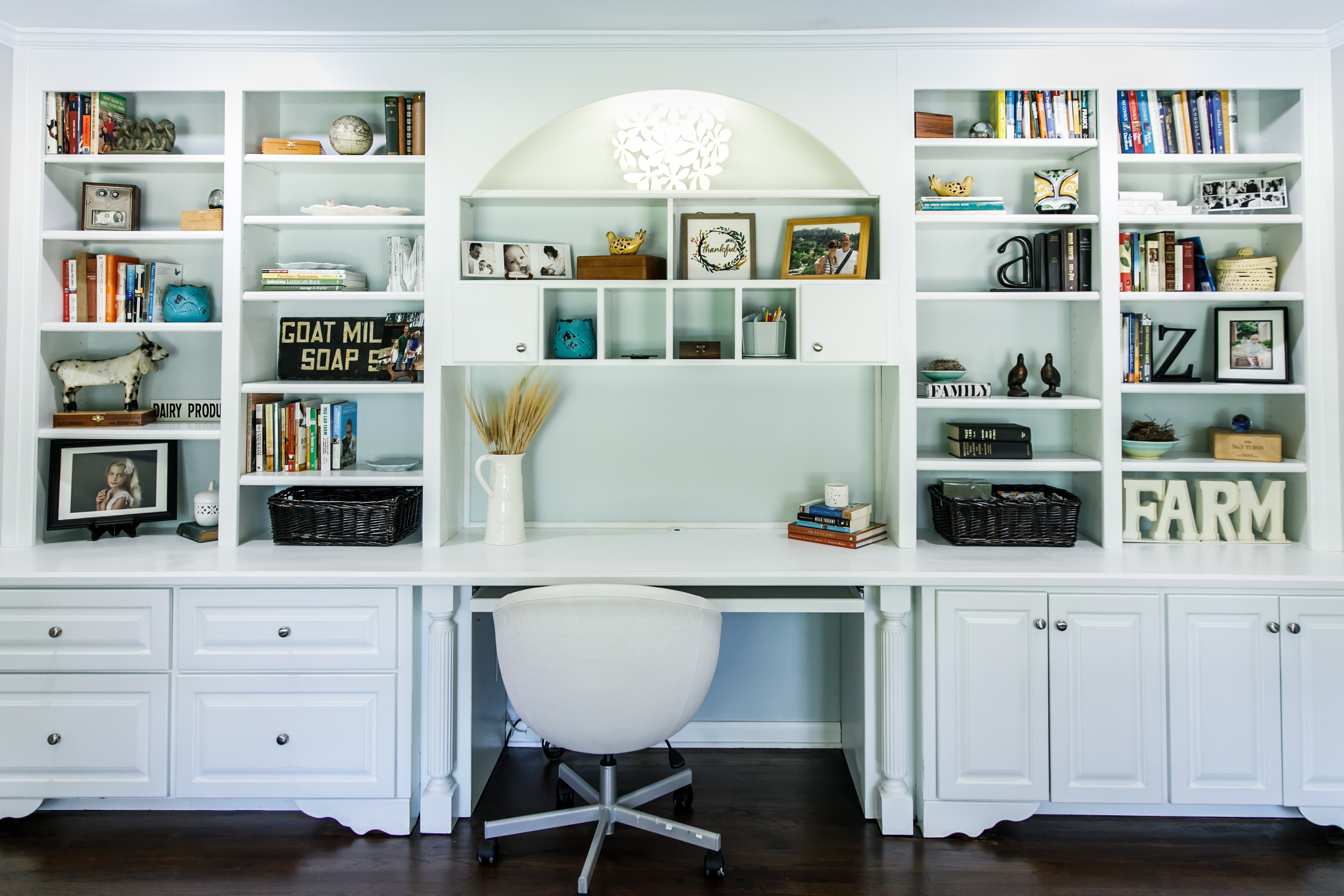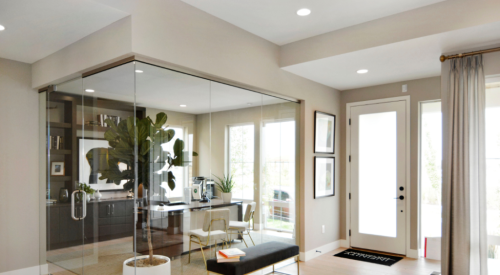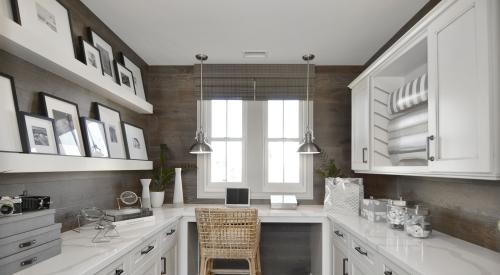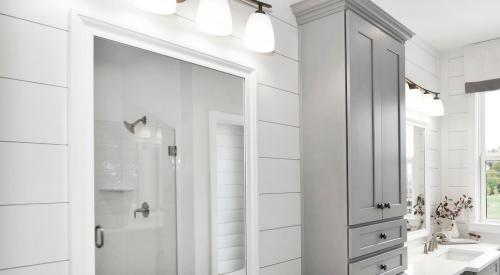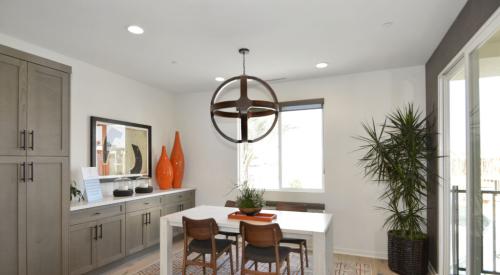The New Home Trends Institute has released new research that sheds light on work-from-home trends—where people work, their biggest telecommuting struggles, and what would best suit their needs.
The John Burns Real Estate Consulting subset surveyed 1,242 homeowners and used calculations from the Census Bureau 2018 American Community Survey to identify the key reasons homeowners would opt for renovations in their home offices, along with how age groups operate in their work from home spaces.
Here are the takeaways we found most applicable for residential pros. The full report can be found at the New Home Trends Institute’s website.
[ Read More: 7 TOOL STORAGE SOLUTIONS TO ORGANIZE YOUR JOBSITE, WORKSHOP ]

Key Takeaways
Remodeling vs Moving
It’s clear that homeowners working from home are greatly interested in stepping up their office design to boost productivity. While the majority of homeowners will not move in order to have more space, there remains a large number of homeowners interested in remodels, and many who are happy with the simple rearrangement of a room.
Out of the 1,242 respondents, only 4% said they already remodeled, while 3% said they moved. Eighty-nine percent either rearranged their space or went with minor improvements. The most likely demographic to need changes to their work from home spaces are mature families or mature singles and couples.
Mature families are identified as a family with children in the household, some, or all, older than 12, including adult children. Mature singles and couples are aged 45 and up with no children in the household. If working from home remains the norm, it will most likely be for mature families and mature singles and couples.
[ Read More: PROJECT OF THE WEEK: HYDRAULIC GARAGE DOOR ADDS LIGHT, SPACE TO A GUEST HOUSE ]
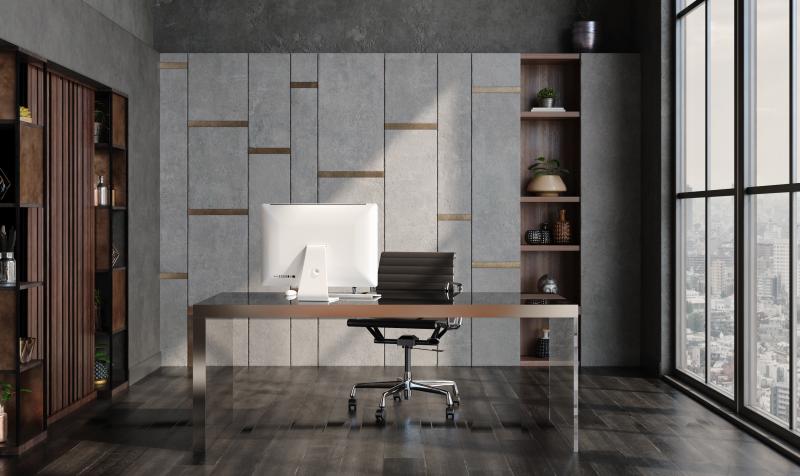
Where Do Homeowners Work?
About 25% of young singles and couples, identified as under the age of 45 with no children, work in a formal office. Another large chunk, 21%, works from their dining or living room while 14% work from the kitchen or family room.
A grand majority, 66%, of this demographic say there are things they would change from their work-from-home space. Young singles and couples enjoy coziness and comfort while working from home.
Young families, identified as families with children under 12, mainly work from a formal office or dining/living room. Kitchens, family rooms, and flex rooms are harder options due to young, rambunctious children.
Mature families work in a formal office 26% of the time and 23% work in either a dining or living room. Older children allow for this group to work more openly, yet 70% still want to improve their space.
Mature singles and couples work in a formal office more than any other demographic, with 34%. Working from the dining/living room or kitchen/family room comes in a close second with 15% and 14% working in these spaces, respectively. Interestingly enough, less than half of mature singles and couples want to improve their work-from-home spaces.
[ Read More: WHAT ARE THE HOTTEST LAUNDRY APPLIANCES BASED ON FERGUSON DATA? ]

Most Desired Home Office Fixes
Young singles and couples complain about a lack of windows and poor lighting, along with additional outlets and internet connection. This demographic has a concern over their presence in Zoom meetings. Shared spaces and non-designated workspaces are big pains for these two groups.
Young families have an even greater desire to improve their work-from-home spaces; 77% reported wanting changes. Young families report similar struggles to their childless counterparts. This group wants more space and even more space away from their children so as to not disturb sleeping babies or welcome noisy young ones. Soundproofing and physically removed workspaces can be the best solutions for young families’ telecommuting pains.
While mature families find peace and productivity working from home, even more peace could benefit this group. The New Home Institute suggests large windows with views or direct access to outdoor space could benefit mature families. Separation of work and home life can be hard when work is at home, but mature families are eager to have distinct, separated work areas.
Every age group desired more space—not necessarily a larger room but space to put their clutter. Mature singles and couples desired storage and organizational systems the most. They also enjoyed the company of their partners and pets, so an open yet distant area is a good idea.
All in all, the majority of those working from home would benefit greatly from a separate space, organization, and some sort of connection to nature, whether that be a view or natural sunlight.
